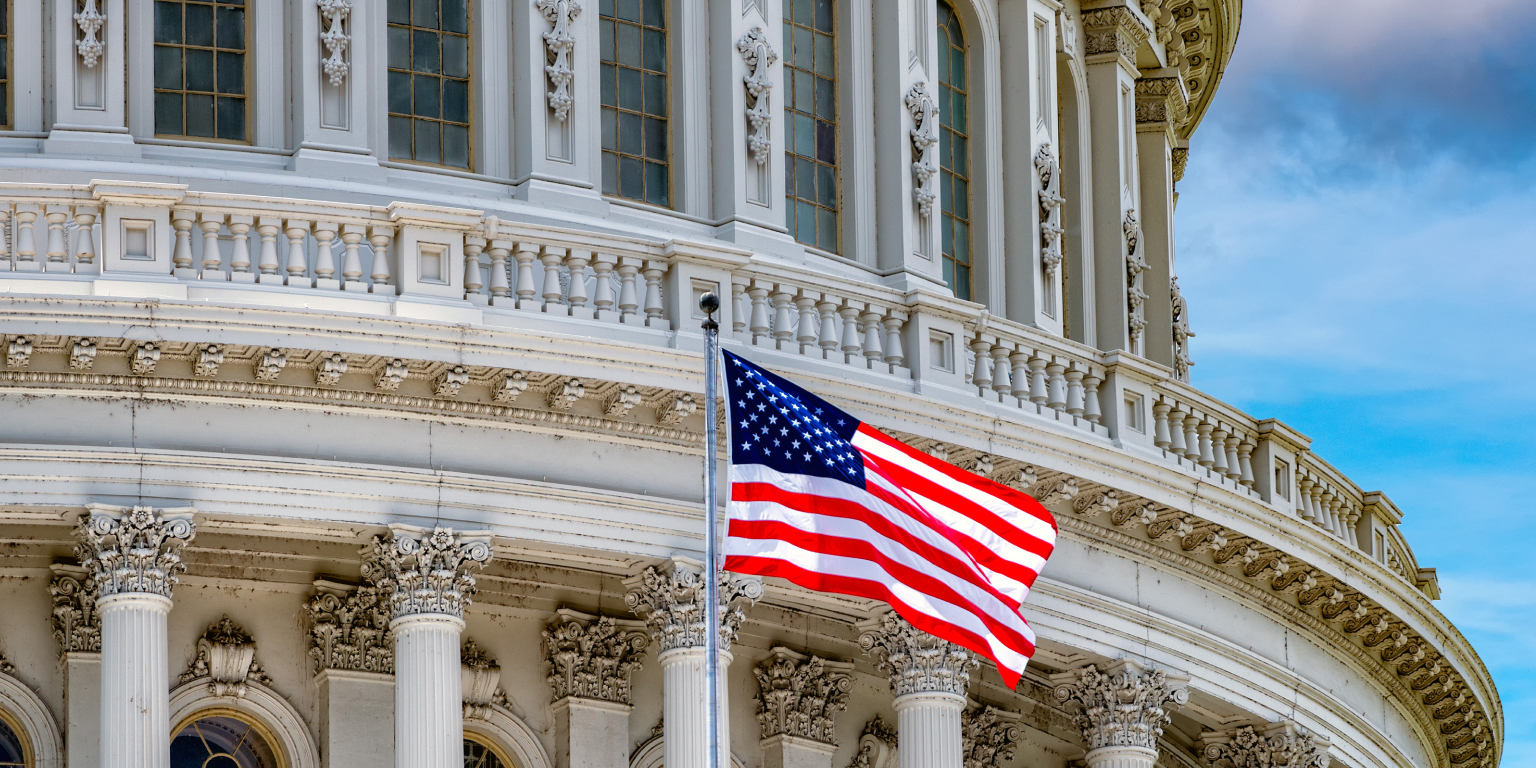The One Big Beautiful Bill Act, which was signed into law on July 4 after significant controversy and wrangling in the House and Senate, has made permanent some expiring tax provisions from the Tax Cut and Jobs Act (TCJA) of 2017—along with a host of modifications and new additions that may impact future giving. Here’s a summary of some key components that could help investors better prepare from a charitable and tax planning perspective.
Top tax rate at 37% with adjustments to 10% and 12% rates
The new bill has made permanent the top tax bracket of 37% for income above $635,985 for individuals and $763,182 for married couples, with slightly higher income adjustments to the 10% and 12% brackets in 2026.1[1]
Higher standard deductions
The TCJA doubled the standard deduction in 2017, and the OBBBA will make permanent the higher standard deduction with inflation indexing. Starting in 2025, the standard deduction will receive a slight increase from $15,000 to $15,750 for single filers and $30,000 to $31,500 for married couples.
Unless a taxpayer has other deductions (for example, medical expenses, mortgage interest and charitable gifts) in excess of those limits, it may not make sense for a taxpayer to itemize deductions. The use of charitable bunching, a tax planning strategy that involves concentrating several years' worth of charitable donations into a single tax year, may continue to benefit donors who are charitably inclined but may not have enough to itemize every year.
State and local tax (SALT) deduction temporarily increased to $40,000
The OBBA temporarily quadruples the state and local tax (SALT) deduction to $40,000 starting in 2025, from $10,000 under the original TCJA. The limit will increase by 1% per year between 2026 and 2029, and the cap will revert back to $10,000 in 2030. The higher limit is the same for all filing statuses except for married people filing separately, where the limit is reduced by half.
The bill also includes a phase down provision reducing the deduction limit by 30% of the amount by which the taxpayer’s modified adjusted gross incomes (MAGI) exceeds $500,000. The SALT deduction limit is phased down to a minimum of $10,000 if a taxpayer’s MAGI reaches the limit of $600,000 in 2025. Similar to the deduction limit, the threshold for married filing separately is reduced by half.
Higher SALT deduction limits may encourage more clients to itemize—in effect, allowing them to deduct more on their charitable contributions. Again, charitable bunching may be beneficial for charitably inclined clients seeking to accelerate several years of gifting into a single year with a donor advised fund (DAF).[2] That may help them reduce their income in certain years and take the standard deduction in other years when their income would phase them out of the higher SALT deduction.
Charitable deductions
Cash donation limits of 60% of AGI made permanent. OBBBA makes permanent part of the TCJA that limits cash donations to 60% of adjusted gross income (AGI) to public charities.
Starting in 2026, the following new items will impact charitable deductions:
0.5% floor on charitable deductions. A 0.5% floor on charitable deductions for individuals permits them to claim itemized deductions before the typical AGI limits of contributions to a public charity of 60% of AGI for cash, or 30% of AGI for appreciated assets.
The OBBBA also includes a set of ordering rules that specify which type of contributions are reduced first by the 0.5% AGI floor. For example, a donor with a $100,000 contribution base (AGI without taking into account any charitable giving) will lose $500 of their itemized charitable deductions, while a donor with a $200,000 contribution base will lose $1,000 of itemized charitable deductions.
Non-itemizers can receive a charitable deduction. Non-itemizers will receive $1,000 for single filers or $2,000 for married couples for charitable deductions. Contributions to DAFs and non-operating private foundations are ineligible for the deduction.
Taxpayers who itemize will face a 0.5% floor for donations implemented in 2026, so it may be more beneficial to make contributions in 2025. Those who do not itemize and make a gift in 2026 will receive an additional $1,000 for single filers or $2,000 for married filers for charitable deductions, but DAFs and non-operating private foundations will be ineligible.
Itemized deductions limited to 35% for top tax rates
Starting in 2026, itemized deductions for individuals at the top tax rate of 37% will be limited to 35%. Note that the 37% bracket’s taxable income begins at $626,351 for single filers and $751,601 for joint filers in 2025. The 2026 thresholds have not been released yet and are likely to edge higher as they are typically adjusted for inflation.
For clients in a higher bracket, making a charitable deduction or claiming more itemized deductions in 2025 will produce a higher benefit than in 2026.
Higher gift and estate tax exemptions made permanent
The TCJA doubled the gift and lifetime exemption to $13.99 million for single filers and $27.98 million for joint filers, and was set to expire at the end of 2025. The OBBBA makes permanent the higher exemption and increases it to $15 million per individual or $30 million per couple in 2026. These are set to index for inflation each year.
The higher gift and estate tax exemptions allow investors who have not used their exemptions to distribute more assets to family members through trust vehicles or wealth transfer strategies with an irrevocable life Insurance trust (ILIT), helping them take advantage of the exemptions. In addition, certain states may also have estate taxes, so using the federal exemption during their lifetime can potentially reduce future estate taxes at the state level.
Bottom line: The OBBBA makes permanent or updates many of the sweeping changes outlined in the TCJA and includes new provisions that may impact charitably inclined investors. It is paramount to understand the nuance of tax laws and how those rules may influence charitable giving decisions to achieve better financial outcomes for investors.
1 Source of all tax rates quoted here is H.R.1 - One Big Beautiful Bill Act, Public Law No: 119-21 (07/04/2025).
2 A charitable giving vehicle that allows individuals, families or organizations to make a charitable contribution and receive an immediate tax deduction, then recommend grants to qualified charities over time.
For clients in a higher bracket, making a charitable deduction or claiming more itemized deductions in 2025 will produce a higher benefit than in 2026.
Featured Insights
Risk Considerations: As charitable giving vehicles, pooled income funds should not be treated as, and are not designed to compete with, investments made for private gain. The tax consequences of contributing to a pooled-income fund will vary based on individual circumstances. Prospective donors should consult their own tax advisors. The tax information contained herein is general and is not exhaustive by nature. The views expressed are those of the authors and are current only through the date stated. These views are subject to change at any time based upon market or other conditions, and Eaton Vance disclaims any responsibility to update such views. These views may not be relied upon as investment advice and, because investment decisions for Eaton Vance are based on many factors, may not be relied upon as an indication of trading intent on behalf of any Eaton Vance fund. The discussion herein is general in nature and is provided for informational purposes only. There is no guarantee as to its accuracy or completeness. Past performance is no guarantee of future results. Nothing in this insight should be construed as tax advice. The discussion is general in nature and is not intended to serve as the primary or sole basis for investment or tax-planning decisions. Prospective investors should consult with a tax or legal advisor before making any investment decision. Eaton Vance is part of Morgan Stanley Investment Management, the asset management division of Morgan Stanley. Eaton Vance does not provide tax or legal advice.








